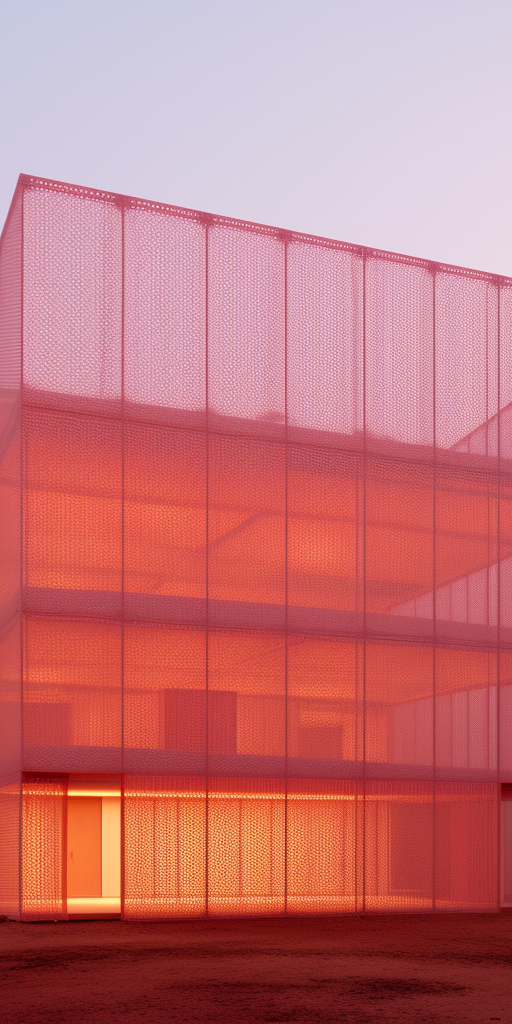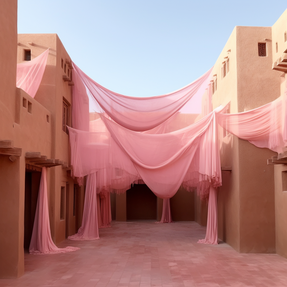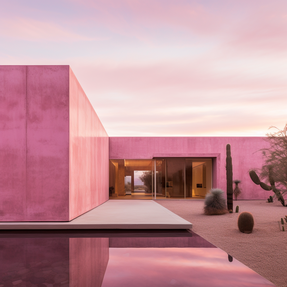As an architect who has journeyed from Saudi Arabia to the United States, I have been deeply inspired by the interplay of cultures, the boundless potential of design and the evolving landscape of technology. Throughout my career I’ve woven the worlds of architecture and digital art, where the lines between these disciplines are blurred. I have recently come to embrace AI as a collaborative partner in my process of crafting spaces and experiences that transcend boundaries; I no longer think of architecture as synonymous with construction.
The use of AI in the fields of architecture and design is far from a novel concept. Whether it is optimising spatial layouts, analysing environmental factors or generating dynamic 3D visualisations, AI tools have long played a pivotal role in streamlining our workflows and enhancing the precision and efficiency of design processes. However, the recent widespread adoption of powerful machine-learning tools, such as Stable Diffusion and Midjourney, has ushered in a new era, enabling designers to explore the limits of their creativity and evaluate their roles as authors of the built environment.
Amid this wave of AI innovation based on big data, some of the major concerns are about the potential obsolescence of many jobs in the profession. Some fear that AI may replace or devalue the role of architects. I have a different perspective. History has shown that earlier leaps in productivity, such as the introduction of computer-aided design and computer-generated imagery, did not replace architects but elevated the quality of work, expanded client options and contributed to better design and decision-making. I anticipate a similar outcome with AI: architects and designers will adopt AI as a tool to enhance creative input, redirecting their creativity rather than eliminating it.
Living in the United States and travelling often for design research, I observe a prevailing trend towards homogeneous design in architecture, interior design and even fashion. While globalisation undoubtedly has positive impacts on design, I firmly believe that individuality and diversity in design are paramount: we need designers with diverse cultural backgrounds and diversity of scales, materials and styles. Buildings on one side of the world should not necessarily resemble those on the other. Because AI tools can be used with such ease in the ideation process, I anticipate that they will promote a departure from the international, homogenised styles that emerged as a symbol of modernity, perhaps encouraging a return to regional and contextual design – which I ardently support. I often incorporate contextual design in my digital art and virtual experiences, drawing from my Arab culture and blending it with universally familiar elements, contributing to the cultural richness of the virtual world. A focus on regional and contextual design enables us to imagine beyond the confines of current systems and create architecture and design that truly chimes with local cultures.
Aside from accessibility another notable strength of current visual AI tools is their ability to blend two or more distinct concepts, creating unique and hybrid outcomes. This potential for fusion is particularly fascinating when applied to architecture. For instance combining vernacular architecture and futuristic design might give rise to a new architectural style, such as ‘vernacular futurism’, presenting a novel synthesis, further shying away from uniformity in design.
While the previous century was characterised by human ideation and machine fabrication, the balance between human and machine roles is shifting, with AI contributing to the ideation phase. I find this role reversal intriguing. I am exploring it on a smaller scale, using AI assistance to conceptualise the design of everyday objects, which can then be crafted by hand through stone or wood carving.
AI identifies patterns, whether text or image based, within existing data sequences, often drawing from a vast online repository shaped by human contributions, which inevitably carry biases, often leaning towards Western influences. Consequently, the output of AI tends to reflect these biases. Thus, our designs, art and thoughts today directly shape the future of these algorithms. It is our responsibility to create diverse and contextually rooted designs, enriching and contributing to a more balanced database from which these machines can learn. Although it may seem paradoxical, AI tools can be leveraged to help us on this journey towards a healthier, more inclusive and culturally sensitive creative landscape.
We find ourselves at a crossroads in the ever-evolving relationship between design, AI and culture. While AI is undeniably revolutionising various aspects of creating and innovating, we must recognise our role in addressing its shortcomings. With its incredible potential, AI reflects the values and biases ingrained in the data it learns from. As architects, designers and creators, we must assume a dual role: harnessing the creative power of AI to push boundaries and simultaneously working diligently to rectify its shortcomings.
Written by Fatimah Alasad, AKA Sattom.




